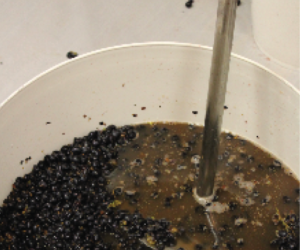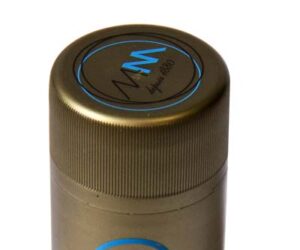
Q
I have a number of novelty corks I brought back from Europe in 1960. They haven’t been used since then, so they are quite dry. Can anyone tell me if there is any way to breathe life back into them so they don’t break off in the bottle? Any information you could provide would be greatly appreciated.
Lee Richards
via email
A
The quick and easy answer to your question is that there’s really no way to re-condition a cork that old, especially a novelty cork. I am afraid that if you tried to use your corks to stop up a bottle of your wine, when you tried to remove them you would just be left with a crumbled cork.
I’m glad you sent this question, though, because it brings up an important rule of the world of corks: corks must have a certain amount of moisture and “give” in order to work to keep the wine in and air (mostly) out. A wine cork is simply a plug of tree bark that functions because of the friction it exerts against the side of the bottleneck. The cells of the tree bark are soft enough to be compressed by the bottling machine, which squeezes the cork and then plunges it into the neck of the wine bottle on the winery bottling line (or in your hand-corker in your garage). The plant cells of the cork then re-expand in the neck of the bottle, creating pressure and a tight seal against the side of the glass. Quite a lot of friction between the glass and the cork must be overcome in order for the cork to be budged and the wine to be accessed and enjoyed. Corks tend to lose their natural moisture and elasticity with time, becoming dry, brittle and easily broken. We’ve all experienced the tough-to-draw cork, and most of us have probably had a few break off half way out of the bottle. This is what I worry about with your souvenir corks.
Additionally, there are other reasons I wouldn’t use your novelty corks to stop up any bottle of wine I was trying to age. First of all, channel your mother in saying, “You don’t know where those corks have been!” There could be damaging molds, yeast spores or fungi living in those corks that could interact with your wine in negative ways. Your corks could also be harboring chlorine molecules (sometimes used in the past to sanitize corks) which can combine into swampy-smelling TCA (2,4,6-trichloroanisole). Your novelty corks are also far older than even the oldest corks that I’ve ever reconditioned (it is possible, more on that later). They won’t have the natural elasticity needed to create the good seal needed against the bottle neck. Also, depending on the size of the cork in relation to your average wine bottle, they may also be the wrong size or shape to find a good seal. Probably the only real use for your novelty corks is as a decorative bottle topper; that is, you could use them for display purposes on top of empty bottles, but only if the bottle necks were big enough to accept them and also allow them to be drawn out without effort.
In the world of commercial winemaking, there is such a thing as re-conditioning dried out corks, though it does cost extra so wineries usually try to utilize corks as they buy them, rather than keep lots of excess inventory on hand and drying them out just to have to re-moisturize them later. If you are a winery that buys in bulk from one of the larger cork suppliers, they typically will accept bags of corks for reconditioning using moisture, pressure and a proprietary coating. I’ve had success doing this the two times I’ve done it, but, like I said, we always attempt to use up corks as we buy them. In your case, the fact that your corks are decades old, not months old, precludes this option for you.
Long story short, is there a real winemaking use for your corks? Not really. Can you display them as a collection of wine ephemera? Definitely!
Q
I am making wine from my own grapes in Alpine, California and have noticed that occasionally a light film forms on the inside of some bottles. I am very meticulous about keeping my winemaking area clean and sanitary. The bottles I use, if new, get a light sulfite rinse prior to bottling. If they are used I scrub them with a bottle brush and one-step cleaner, then I rinse with water and give them a light sulfite rinse. Most of the wines do not have this problem, only a small percentage. Any idea what might be the culprit?
David Didier
Alpine, California
A
You might be encouraged to know that finding a light film inside some bottles after wines have been aged for a few months is entirely normal, especially if your wine is un-fined or unfiltered. Minimally-handled wine (many homemade wines fall into this category) carries more tiny solids and precipitate precursors like tannins, phenolic compounds and tartrates, which can fall out of solution over time. They can collect in a light dust-like layer at the bottom of bottles or can deposit on the sides of bottles, sometimes appearing in the film that you’ve observed.
Additionally, wines that aren’t racked very often or that are bottled early will have higher amounts of these compounds, making them especially susceptible to precipitates. Sometimes entire batches will throw a sediment and sometimes, like you, I’ve seen this happen in only a few bottles out of the same lot. One cause I’ve been able to find in my own practice is that the last bottles corked tend to throw the most sediment; after much head scratching, I finally figured out that as I racked my unfiltered wine from its carboys into the bottles, the last couple of bottles simply had a little bit more “stuff” in them (because of what gravity brought to the bottom of the carboy).
It sounds like you’re doing all the right things cleaning out your wine bottles before you fill them and are practicing good sanitation. If you’re only having this issue with a few bottles per lot and can live with those few bottles, I wouldn’t change what you’re doing. You could try to make sure that you are treating every bottle the same; sometimes very small things, like some bottles being stored in a slightly colder place can make a difference (colder temperatures cause more solids to fall out of solution, for example). If you’d like to improve a whole batch, you could try to age your wine for a little longer before bottling, or if consistent with your wine style goals, you may want to fine and possibly filter your wine before bottling. That way you give your wine optimal opportunity to drop its solids naturally and to “clean itself up” before you put it in the bottle.







